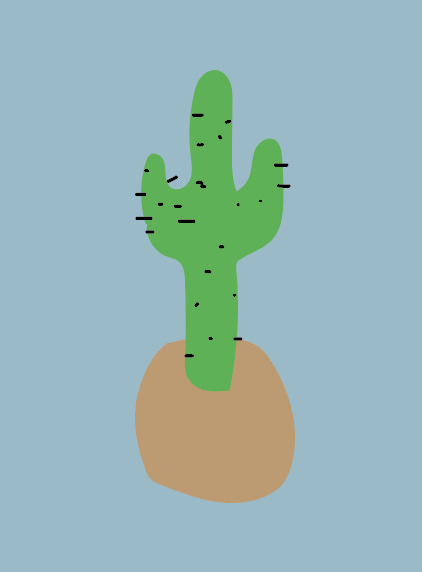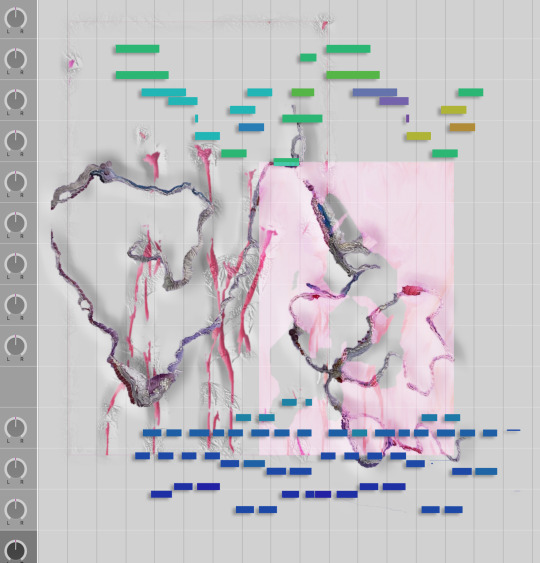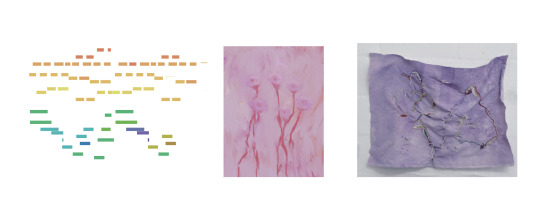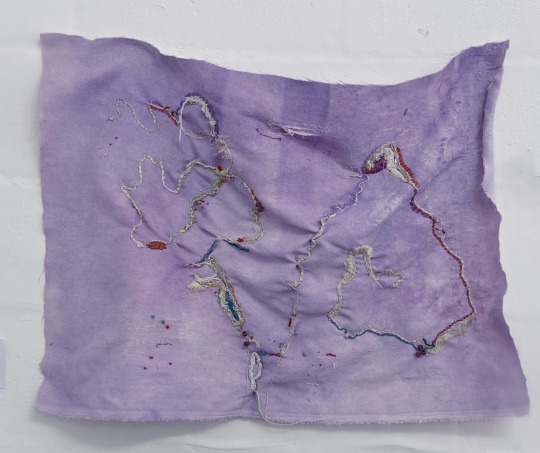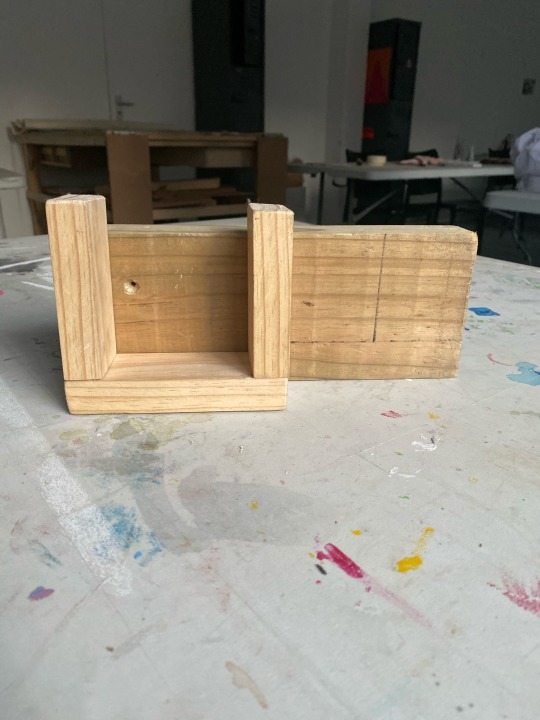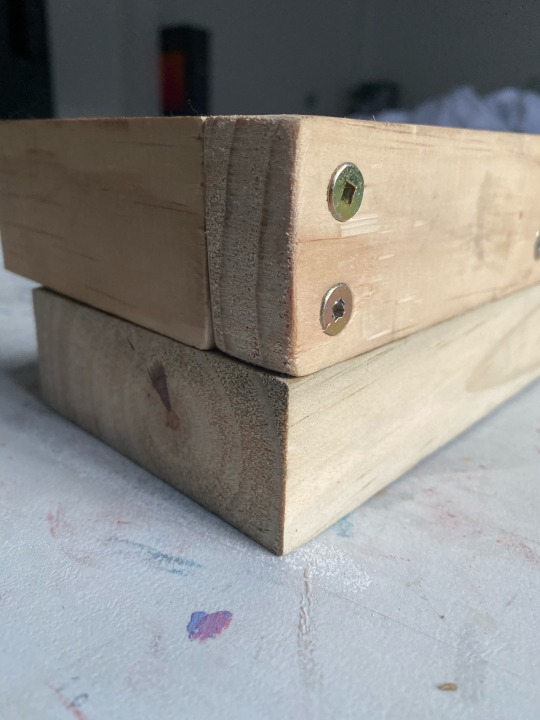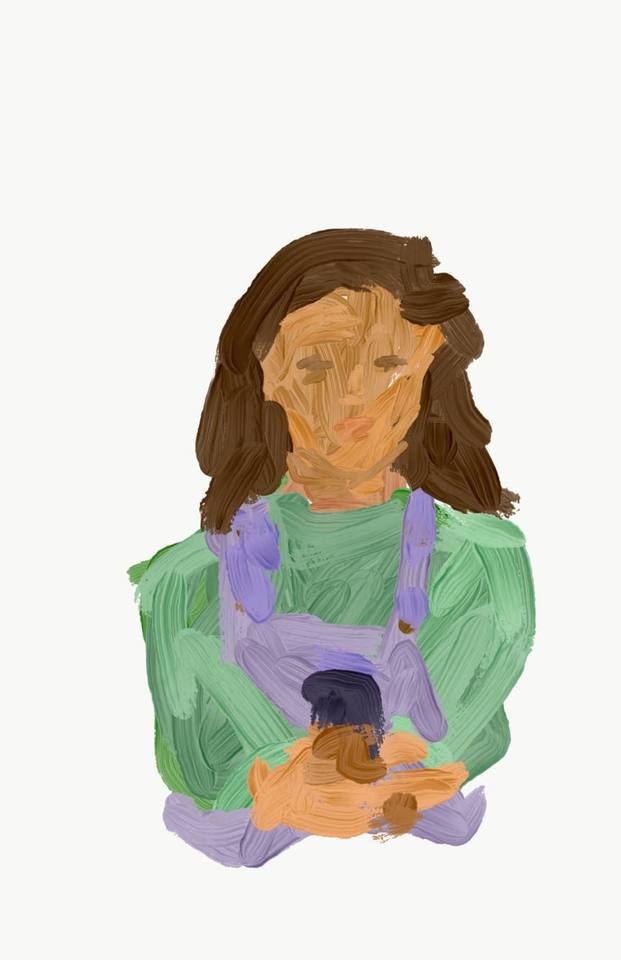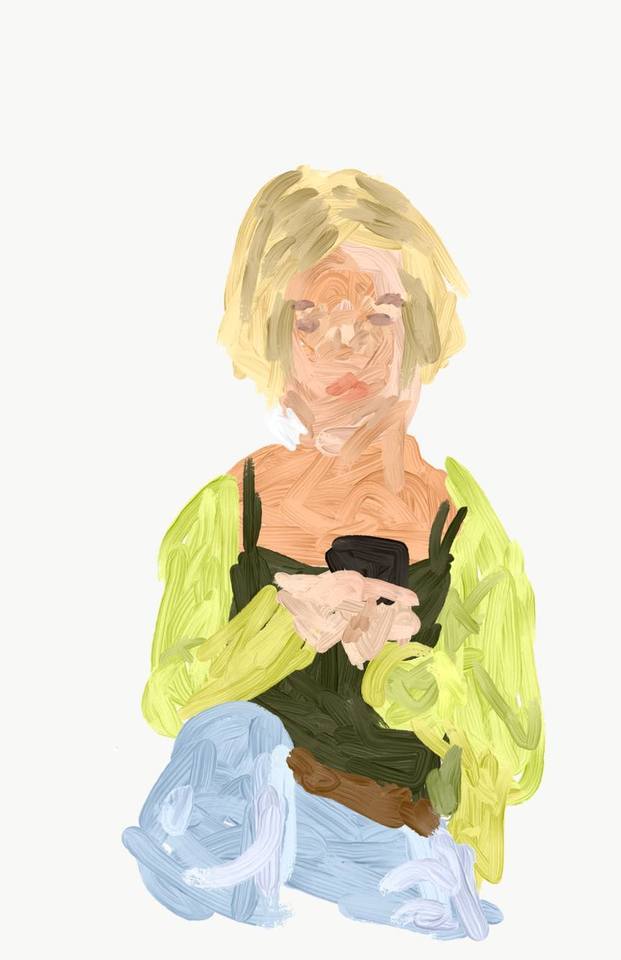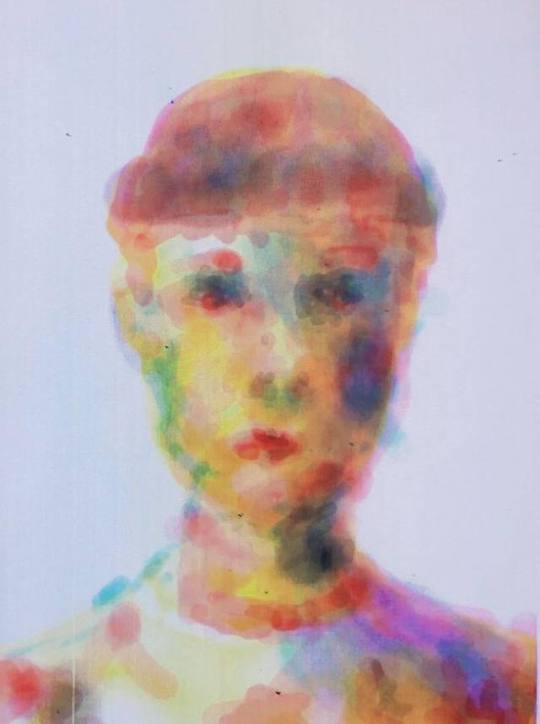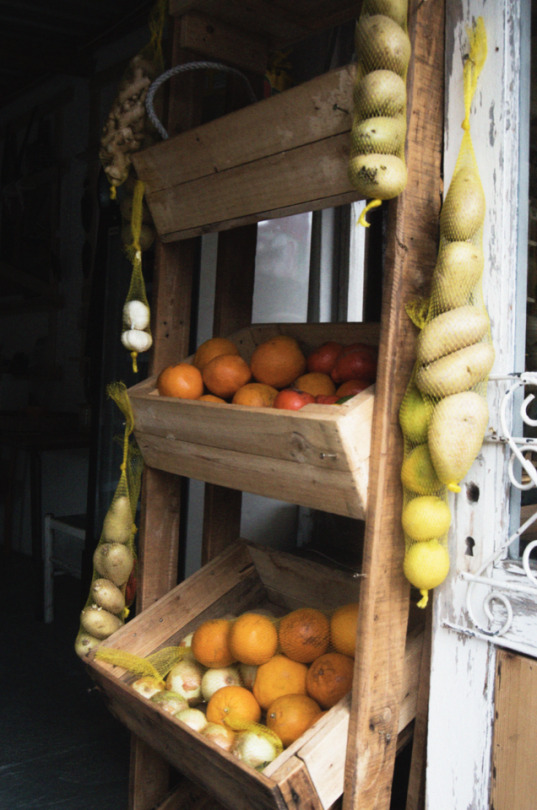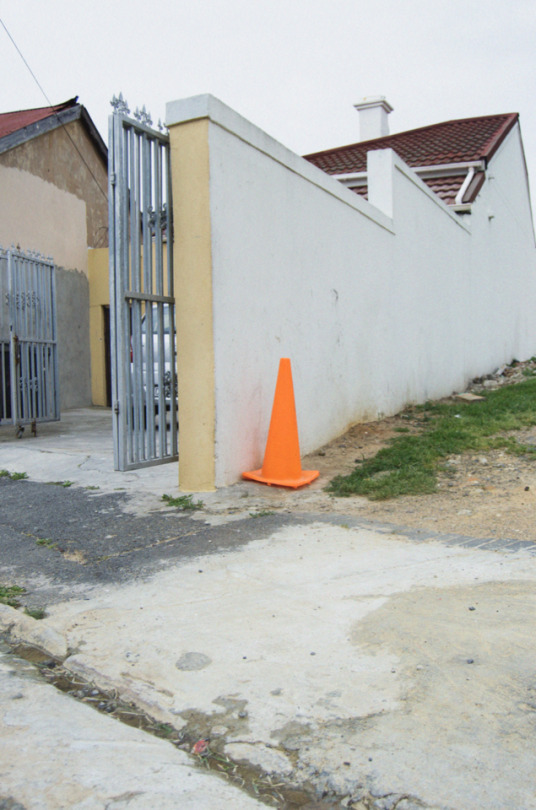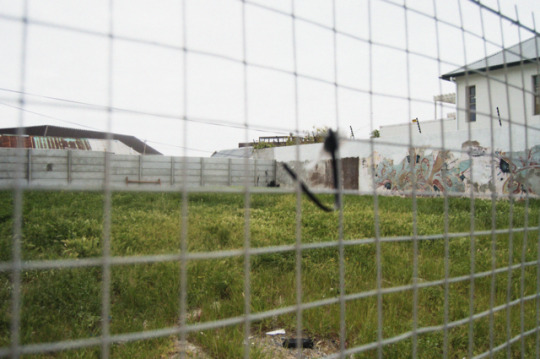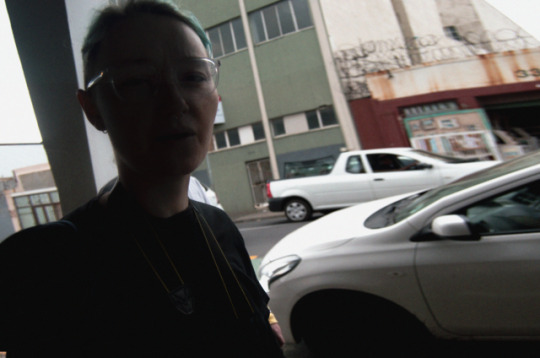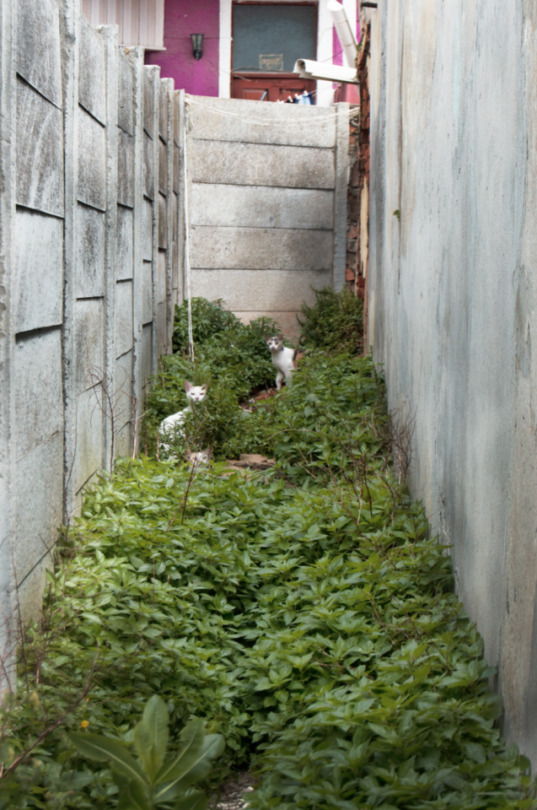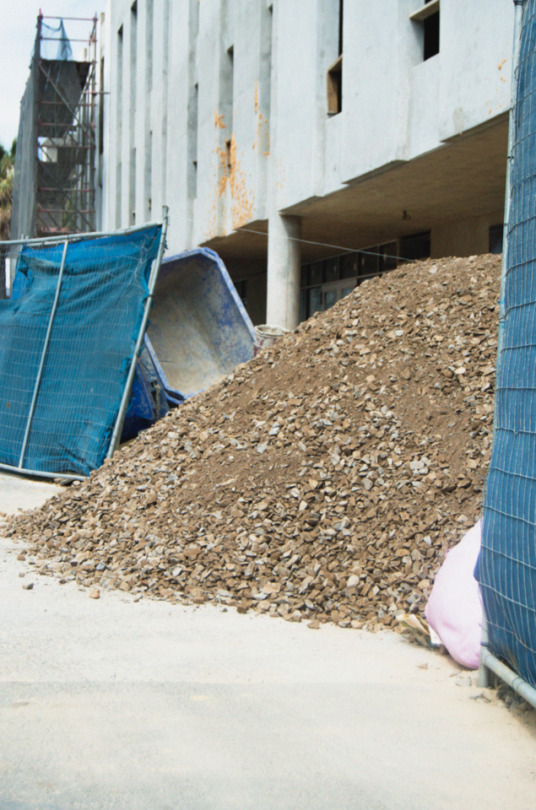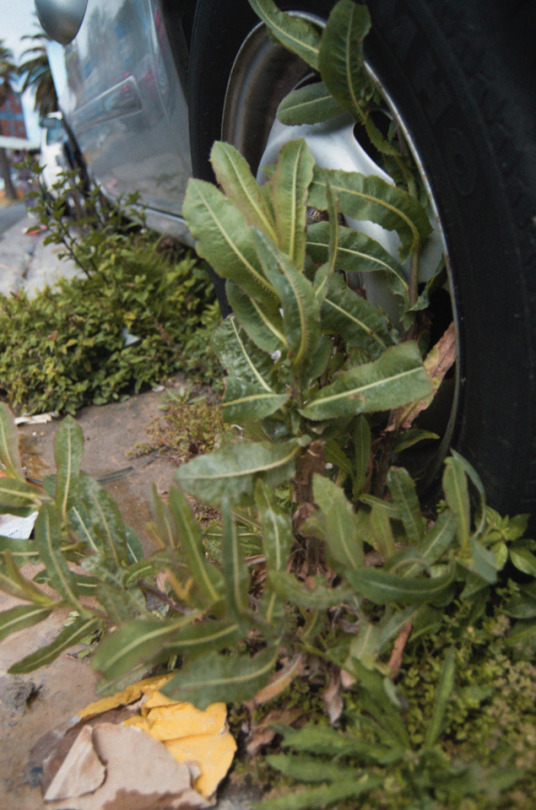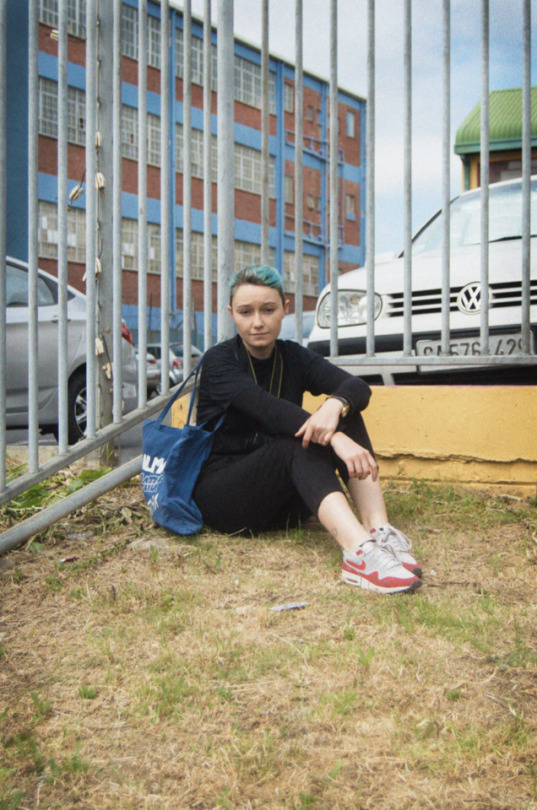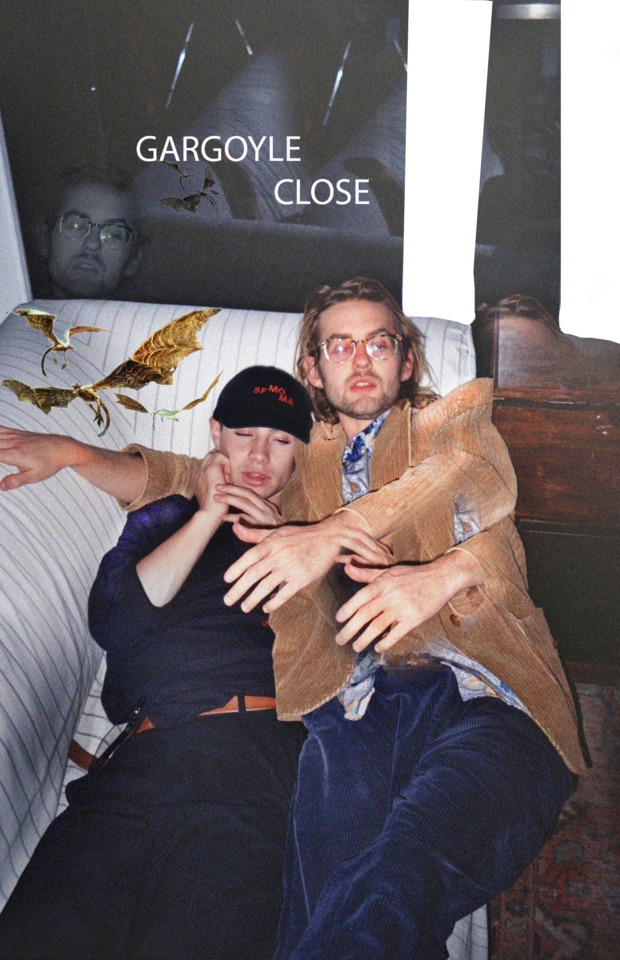Text
Water Body.
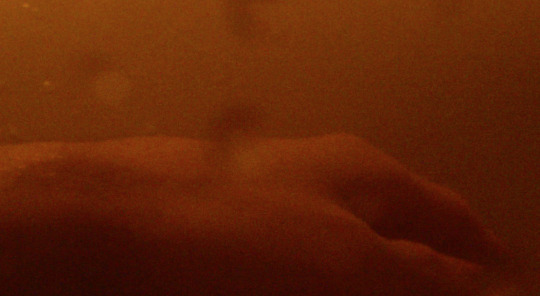
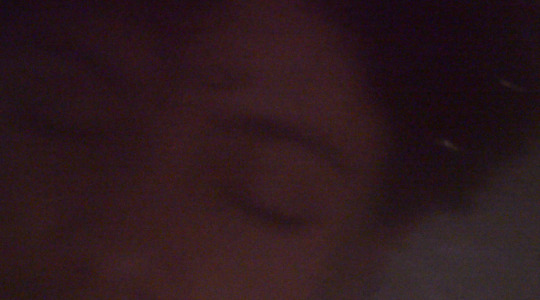
Sinking 1 & 2
Film stills
1,920 x 1,080
Water Body is a film that explores the sensations associated with being underwater. The film makes use of vivid orange and blue light, first person camera angles and abstract imagery to create an effect of augmented reality.
It captures both an external experience, depicted through the human body moving through water, as well as an internal experience, shown through imagery that resembles electrical impulses. The latter is a portrayal of the electro-chemical reactions that make up human thought and an attempt to render the internal human form through visual abstraction.
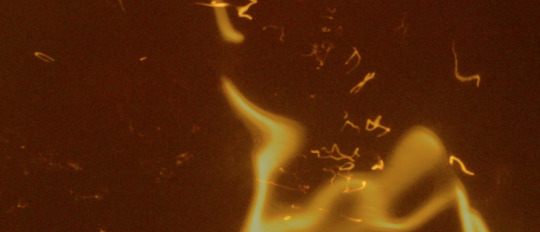
Thoughts
Film still
1,920 x 1,080
The film also explores relationships between tension and calmness. This is done through varying the level of stillness both in the body depicted, as well as in the lighting and the camera stability.
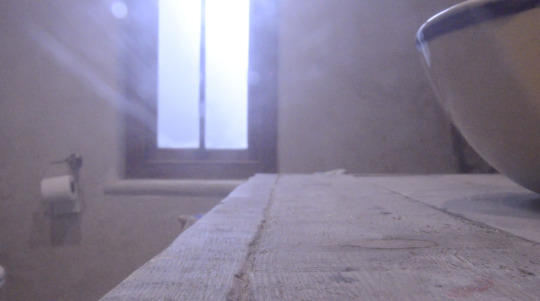
Window Light
Film still
1,920 x 1,080
Viewing Instructions.
Sound.
It is best to view the film with headphones as it is important for the sound to be close to your ears, as it would be when actually underwater.
Holding Your Breath.
When the first black screen appears, you may try to hold your breath until the end of the final black screen and the disappearance of the underwater audio track. This will take just over one minute. The reason for holding your breath is that it allows you to fully connect your own physical sensations to elements of what is being described on the screen.
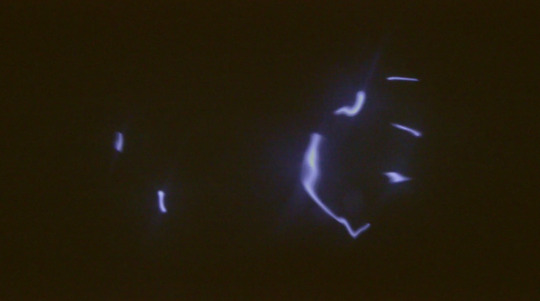
Thoughts 2
Film still
1,920 x 1,080
0 notes
Text
Library research project.
Relevant Artists.
Brian Eno. (b. 1948, United Kingdom).
- Ambient music composition.
Methods of randomising processes of creation.
Methodical representations of data.
Lee Bul (b. 1964, South Korea).
Wide range of materials including silicone, metal, resin, chain, crystals and beads.
Diverse use of mediums.
Space like and utopian forms.
Lee Bontecou. (b. 1931, United States).
Juxtaposition of linear rigidity and soft organic forms and lines.
Materialistic quality to sculptural work.
Deep tones and heavy shading that resemble tunnels draw the viewer in.
Techniques.
Hand sewing.
Running stitch.
Sorbello stitch.
Beading.
Fraying.
Photograpy.
Time-lapses.
Slow 'stop frame’. 9 frames per 1 hour.
Developing film in dark room.
Digital schematics (taking important information to be represented with vector lines).
Framing.
Matting. (Paperboard, Cotton, archival)
Mounting. Side panelling (wood, canvas, aluminium, brown paper).
Wood cutting.
Unorthodox methods including suspension and wire frames.
Back board and string/wire construction and reinforcement.
Achieving elevation between artwork and glass.
Additional sources.
David Toop, Ocean Of Sound: Ambient sound and radical listening in the age of communication.
Rachel Whiteread, Transient Spaces.
Lawrence Alloway, William Baziotes: A Memorial Exhibition.
Bibliography.
Artists and techniques:
1. Claire Wellesley-Smith, (2015). Slow Stitch. London: Batsford. Available from: https://www.amazon.com/Slow-Stitch-Mindful-Contemplative-Textile/dp/1849942994. [Accessed: 13th February 2020].
2. Cristopher Scoates, (2013). Brian Eno: Visual Music. San Francisco: Chronicle Books LLC. Available from: https://www.amazon.com/Brian-Eno-Visual-Christopher-Scoates/dp/1452169365/ref=sr_1_1?keywords=brian+eno+visual+music&qid=1581882135&s=books&sr=1-1. [Accessed: 13th February 2020].
3. Joan Banach, Jeremy Meluis, Laura Stamps, Benno Tempel, (2017). Lee Bontecou. London: Koenig Books. Available from: https://www.artbook.com/9783960980667.html. [Accessed: 14th February 2020].
4. Michael Amy, Yeon Shim Chung, Laura Colombino, Stephanie Rosentha, (2018). Lee Bul. London: Hayward Publishing. Available from: https://www.cornerhousepublications.org/publications/lee-bul/. [Accessed: 12th February 2020].
Additional sources:
David Toop, (1995). Ocean Of Sound: Ambient sound and radical listening in the age of communication. London: Serpents Tail. Available from: https://www.amazon.com/Ocean-Sound-Ambient-listening-communication/dp/1788160304/ref=pd_sbs_14_t_0/134-2808292-1830323?_encoding=UTF8&pd_rd_i=1788160304&pd_rd_r=4220d946-e852-4658-bf8c-a2bbd83db308&pd_rd_w=PNRNE&pd_rd_wg=tC5PV&pf_rd_p=5cfcfe89-300f-47d2-b1ad-a4e27203a02a&pf_rd_r=1EWTQVT2JCGQCBJHVX6E&psc=1&refRID=1EWTQVT2JCGQCBJHVX6E. [Accessed: 14th February 2020].
Lawrence Alloway, (1965). William Baziotes: A Memorial Exhibition. New York: Guggenheim Museum Publications. Available from: https://archive.org/details/williambaziotesm00allo/page/34/mode/2up. [Accessed: 14th February 2020].
Rachel Whiteread, (2001). Transient Spaces. New York: Guggenheim Museum Publications. Available from: https://archive.org/details/rachelwhit00whit/page/n99/mode/2up. [Accessed: 14th February 2020].
0 notes
Text
Tutorial Questions 11.02.19
Tutorial Questions. 11.02.19.
Smac Gallery.
Wallen Mapondera, Chirema Chine Mazano Chinotamba.
Parts of your work Nhereka Nhereka resembled honey combs to me, and Tuck Shop 2 resembled rock strata. Do you ever use natural patterns as inspiration?
Your textiles work is very intricate and meticulous. Have you had prior experience working with fabrics outside of your practice, or is it something that began and developed over your artistic career?
The sound piece inside the exhibition felt like it helped describe some of the locations that may have acted as inspiration. What was the intention behind incorporating it? And do you often work with sound in your exhibitions, or was it something specific to this show?
Blank Gallery.
Sabelo Mlangeni, The Royal House Of Allure.
The images you captured at The Royal House Of Alure reflect a space of expression, intimacy and belonging. I’m sure it must have been hard to leave after becoming so close to other members of the household. Do you have any plans to return again? Maybe to see how the energies have evolved and also to meet new people who have found their way there.
The house as a whole seems vibrant with creative energy and diverse in talent. It seems like a perfect setting for collaborations to be born. Have you stayed in touch with anyone from the house and would you consider working further on new projects?
Igshaan Adams, stukkinne stories.
I’m curious about the titles of your works, such as 11B Larch weg (i). While the works themselves have an abstract quality in shape and form, the titles and also the materials ground them to human experience and moments. How do you set that transformation into work, going from something experiential to something with physical form and presence? Or, how do you bring form to feelings and emotion, people and place, thoughts and ideas?
Stevenson Gallery.
Barthélémy Toguo, Bilongue.
The hand drawn portraits in ??? Incorporate borders made up of proverbs and wisdom that at times seems individualistic. Did these words come about through personal discussion with people that you met and spoke to? Or do you also incorporate things that you have heard and learned personally while growing up in Cameroon?
Your works play an important part in preserving Cameroons identity and wisdom and also its colonial history. What are your thoughts on how the country will change going forwards into the future? What are some of the challenges that the country needs to overcome?
You sometimes split your working time between working in Bandjoun (Cameroon) and Paris (France). What the main reasons for moving around between these two cities? And in what different ways do they inspire your artistic practice?
0 notes
Text
Curatorial PartC
For my three objects I chose to use an orange, a plum and a bowl. All of the objects were already on the table in the pictures.
Image 1.
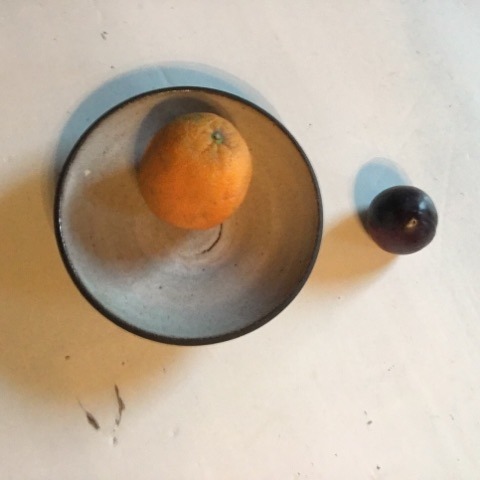
Image 1 is how I found the objects initially. The bowl seems to play a role in ‘selecting’ what belongs on the table. The fruit outside seems accidental.
Image 2.
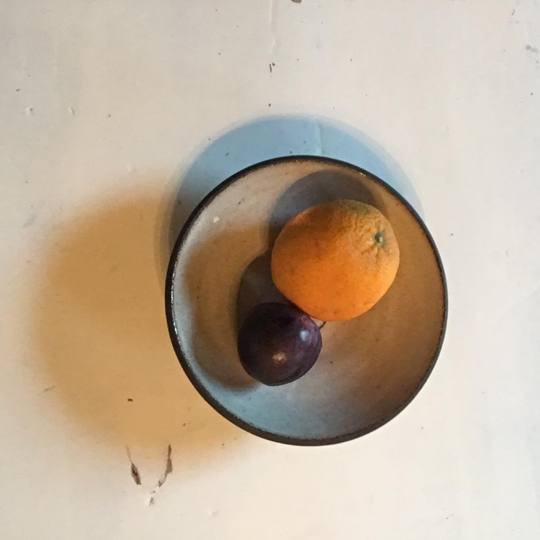
With the plum placed inside the bowl, harmony and balance are restored and the objects appear to act as one unified work.
Image 3.

Image 3 is how I left the objects at the end. The work feels turbulent and disrupted. This is somewhat ideological, based on our knowledge of the functions of objects. One can argue that the piece is still unified and balanced as each object is treated equally.
0 notes
Text
Part B : Curatorial Project.
Question 1.
What is a curator?
A curator is basically someone with a keen eye for making selective decisions regarding content. One can curate many things, from an exhibition space, to a wedding venue to the line up for a concert. In the art world a curator could be involved in designing the look and feel of an exhibition to aid in the interpretation of the work.
Question 2.
Response to reading.
1. I found it interesting reading about Sergei Diaghilev. It is interesting to hear about Obrist’s inspiration and how they relate to curatorship.
2. It’s not a long sentence, but I liked the quote, “I wanted to be helpful to artists. I think of my work as that of a catalyst – and sparring partner”. It paints an image for me about the relationship between artist and curator (something I didn’t know). In addition to selective decisions, they are also there to challenge the artists and push them further.
3. Another interesting point is brought up while talking about Jean-François spectacular curation for Lyotard’s Les Immatériaux in 1985. Obrist notes, “The danger that it became the Gesamtkunstwerk of the curator rather than of the artists”. This is something important to note. Curatorship is an art and in a way it can contest with the art on display. To make something too spectacular would take attention away from the work.
Question 3.
Response to curator interviews.
1. Okwui Enwezor views his practice as something with a close relationship to the space he finds himself working in. He describes this as space to ‘act’ within. Implying it is a very involved and performative practice.
2. Koyoh Kouoh is the curator for the Contemporary African Art Fair. In her interview, she explains the great importance in giving voice to artists from African origins. She also notes the struggles African artists go through getting visas for European exhibitions, despite the large contribution they make to the art world. That is why origin is something very important in Kouoh’s practice.
3. Simon Njami is the curator for Dak’art. Njami is very aware of the strength of the art scene within Africa and also of the vast quantity of works that exist. He speaks to the interviewer of TRTWORLD about bringing these works to the surface around the world.
Simon Njami and Koyoh Kouoh touched on similar objectives during their talks, however, they have slightly different approaches. Kouoh focuses a lot on the role of European society in giving focus to African artworks and on their impact on the art world as a whole, whereas Njami focuses more on involvement from Africans themselves, such as the artists, leaders and institutions. He calls for Africa to show its strength in the art world and take its place with a stand. Both curators believe firmly in the importance of African art within the global art scene, and this forms the basis of their curatorial practice.
Okwui Enwezor does not touch on the same points. He speaks about curation from a practical and psychological perspective, less from one centred around geography and greater goal (in this particular interview).
0 notes
Text
An essay contextualising and defining the Internet Respondent Art Movement.
Rowan Blem
18085
CTCA
Internet Responded Art (IRA) is a movement that emerged late in 2017 and grew to prominence during 2019. It is characterised by works that address the socio-digital era, or show a clear influence from it. These works vary between macro and micro themes and ‘self and other’ themes. They look at things that happen on social media at a personal level, as well as how the personal as practice becomes non-diverse and mass cultural. The themes of self are prevalent through the concept of the ‘user’. One implants their ‘self’, preferences, ego, esteem and image all online and at the same time are confronted with and by millions of other ‘selves’, preferences, egos and images. And all while being watched by an ‘other’. Some corporation that provides the service and owns the content.
Contextualising the socio-digital era.
This era began in 2004 as a result of the emergence of Facebook. Facebook created an online social network that operates like a vast, growing series of nodes. There are millions of connections between each point (user). As more users join and use Facebook, they are connected in more ways than just by the friends system. They mutually see posts from pages they like with thousands of others all over the world. Just as google gave way to hyper accelerated information access, Facebook created a hyper accelerated social climate. Posts from users became incredibly frequent while also having an infinite lifespan. Enough time to keep growing and growing in views and reach indefinitely. This extreme growth and reach quickly appealed to people for purposes of promotion. With the birth of instagram, this soon became the ruling function of social media. The image based platform became dominated by marketing of the absolute ‘self’ and a cultural phenomenon developed with practices such as ‘seflie culture’. A behavioural trend hat has been heavily criticised as being narcissistic. This culture has become so dominant that the digital age itself and the generations born into it have often been labelled narcissistic.
We currently live with a civilisation heavily reliant on the same thing, social technology. And as a part of life, it is only natural that artists would begin to criticise the practice, just as art movements have done in the past. Post-modernism criticising the mass spread of capitalism, mass production and consumerism and modernism responding to rigidity and criticising industrialisation and the effects of machines on life and on war. The IRA movement varies in its focus on micro and macro elements of todays society. It can refer to work that utilises social media canvases such Richard Prince’s use of instagram screenshots, addressing the micro of what people do on a day to day basis, to works like Hito Steyerl’s, How Not to be Seen: A Fucking Didactic Educational, which addresses broader macro issues of surveillance.

A still from Hito Steyerl’s How Not To Be Seen: A Fucking Didactic Educational.
Steyerl’s film contains 3D modelled scenes and it is narrated by an electronic female voice, similar to that of Siri and Alexa. It addresses the issue of online surveillance and server tracking, which became a widely debated topic after a privacy scandal involving a company called Cambridge Analytica. Millions of Facebook users had their facebook information accessed unknowingly as the result of a third party app. Another application that breached privacy was the Russian Face App, which allowed users to make their faces look aged using a filter and also gave away the rights to the images they took. A juxtaposition of narcissism and surveillance. It is as if people stare and fix their hair in a mirror that has double sided glass and a room of people behind. With funny black glasses, black pens and secret code running on their apple desktops. The artist Cindy Sherman has responded to this with an interesting approach to creating selfie art that uses face filtering applications to do the opposite of what they are intended to do. Instead of fixing her photos, she manipulates them by exaggerating the editing tools to results of distortion. It is interesting to take note of what these tools allow Cindy Sherman to achieve and what her art practice centred around before they came about. Creating characters is a part of her work and face filters are a simply a new way of making that art. Only quicker and just as crazy.
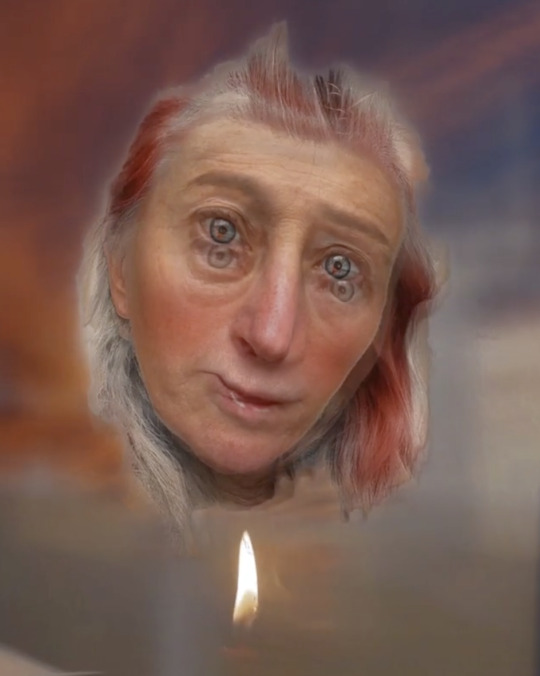
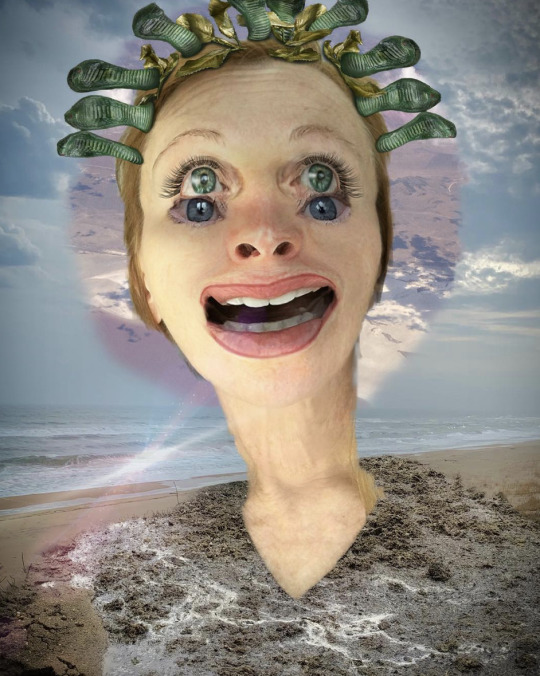
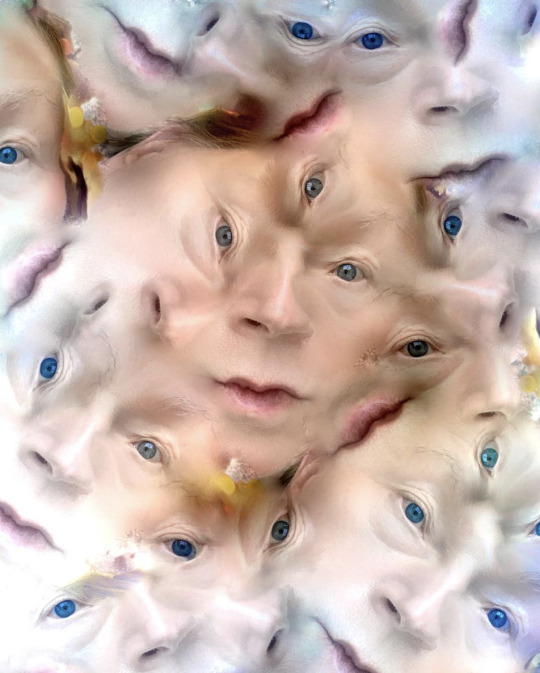
Images courtesy of Cindy Sherman’s instagram.
2.
Defining a seminal piece for the IRA movement is hard to do because it is the mass of pieces that defines this content heavy movement. A work that highlights multiple themes at once is useful to look at. An example is Bxd xhn’s Electronic female voice versus female electronic voice, a text piece made in 2019. Bxd xhn is an internet artist who works with text and sometimes images.
Electronic female voice versus female electronic voice.
1 de-personifies android voice saying the electronic mimics the female voice
2 personifies the electronic and assigns it gender. The electronic is a personality and it is female.
Bed xhn’s ‘Electronic female voice versus female electronic voice’.
The sentence shows different meanings from two word orders. It contains themes of gender assigning in language, A.I consciousness and humanization. A large part of the IRA movement is the debate of challenging pronouns and gender norms. The dictionary tone in the work makes it feel like a lesson pointing out how ingrained assigning gender roles and humanising things are in our society. It is like an educational line teaching new ways of thinking. I like this piece as it is very short and minimal in a way while still containing a clear relationship to current trends of addressing language, artificial intelligence and its personality and rights.
The IRA movement as a whole is one of mass information, criticism of previous cultural norms and social structures, criticism of surveillance and organisations and governments that possess too much power as well as exploring the self and how the self relates to and survives in this evolving social, cultural and political climate. The manipulation of digital working tools and social media platforms such as YouTube and Instagram are characteristic of the movement and we find that more and more works are being produced outside of the gallery space while still managing to be viewed by thousands and thousands of people. The IRA has a reach quicker and greater than any art movement before it.
0 notes
Text
U-Sampler Rationale.
In order to represent my digital self, I had to think about what defines my digital experience. The thing I use my computer most often for is making electronic music. And online, besides finding information on google, I am watching strange videos and looking for things to sample in interesting ways.
For my self project I decided to make a sculpture that resembled a digital machine and had it carry out the same operation. It uses YouTube’s algorithm to repeatedly sample audio from videos and play it in four different layers at random. This process continues inevitably, reflecting the vastness of internet content.
I understood the term collage as referring to a combination of different elements coming together. I decided to approach this from a three dimensional point, collaging different pieces of scrap metal onto a steel box, forming an imaginary digital machine. The machine itself is a randomised sampler and has the visual aesthetic of the dystopian sci-fi genre inspired by a few of my favourite films, Akira, 1984, Metropolis & Tetsuo Iron Man.
The ‘random’ audio sampling can be considered ‘semi-random’, as it begins with a keyword and from there it takes its own course.
The four keywords searches used in this project were:
Alexa.
Boards Of Canada.
Internet explained.
Funny Cats.
0 notes
Text
Tut Assignment 2
In the talk ‘New Ways of Seeing - Digital Justice’ I found it fascinating to learn about the high prevalence in algorithmic biases. Algorithms are supposed to be objective, however, as so much of our existing data has been built around a sexist and prejudice history, these algorithms have generations of skewed and subjective data that results in an algorithm that reflects the passed of societies biases.
Another thing I found interesting was how deeply ingrained societal ‘norms’ have become, putting things into all kinds of boxes that do not include people who fit outside.
I found Artis Zach Blas’s Engendering Gender changer a particularly interesting artwork raising awareness to heterosexual norms that exist even as far as plug names. In his artwork he calls out and challenges the labelling of plus points as ‘male / female’.
The devices, under the term ‘queer technologies’ include devices such as ‘Female to Boi’, ‘Male to femme’ and ‘Male to Butch’.

0 notes
Text
Brief question for tut.
After learning about intersectionality, it can be said that white females may benefit more from the feminist movement than black females as they are not disadvantaged by racial discrimination too. Do you think the feminist movement should move towards focusing equally on combatting racial discrimination as gender discrimination? If so, should that movement be inclusive of males of colour as well, or a unique sector?
0 notes
